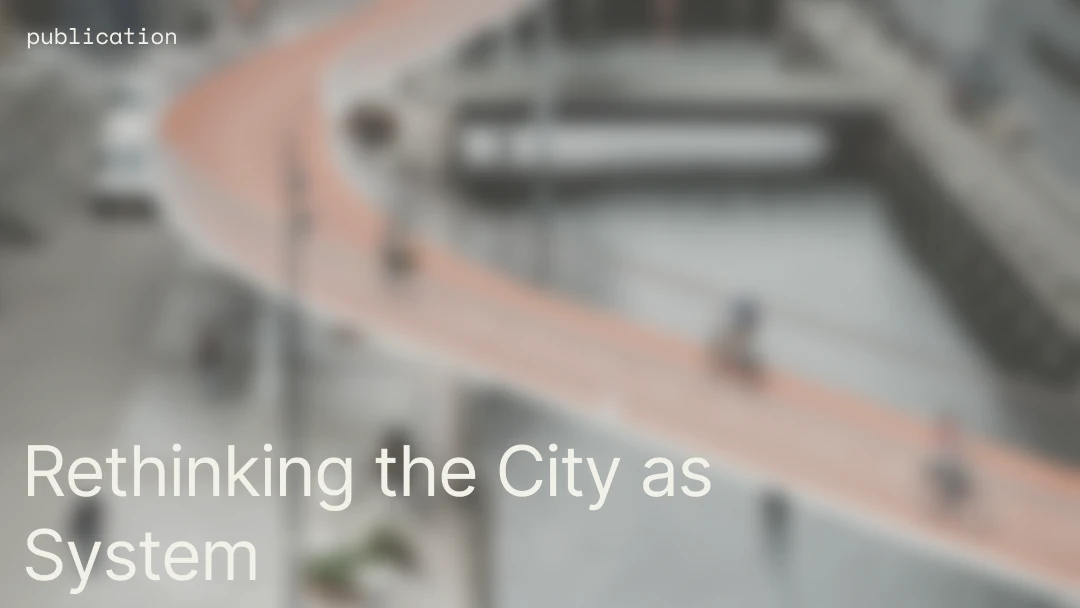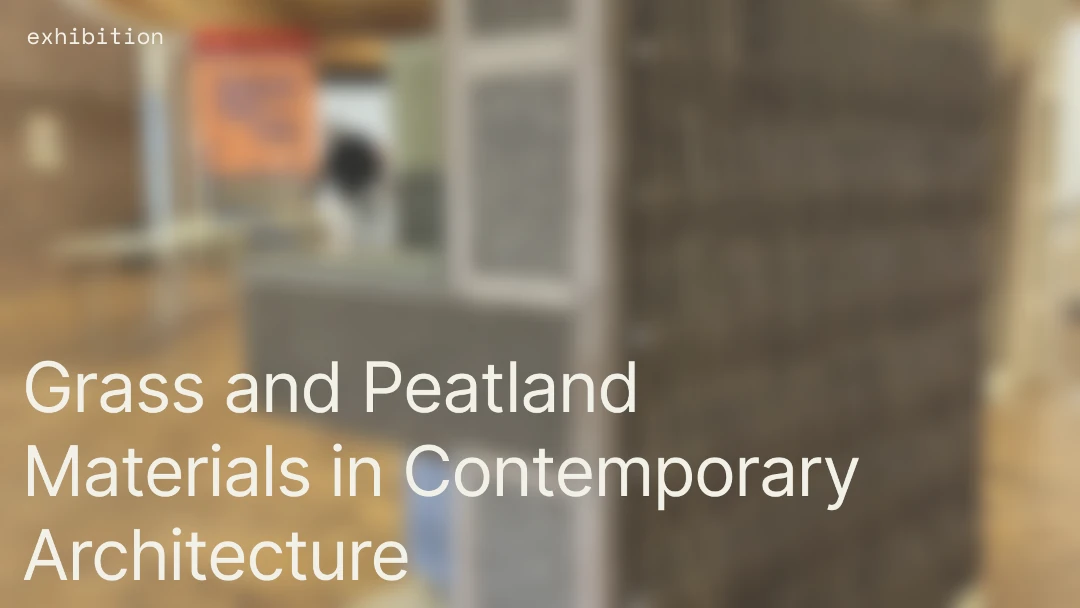
This collection intends to highlight the potential of bio-based materials, theme that our Park Plus research team has been developing for years, with the aim of emphasising the need for an ethical, responsible and low-impact architecture.

About
My name is Fabian Hörmann and I am founder and architect of the new architectural practice YR22 in Zurich. As a kid I was building mud houses in our garden. Facing the climate emergency I remembered that and became an activist in the collective Countdown 2030 to rise awareness. During my previous job at EM2N I started the book project THE REAL DEAL to convince today’s decision makers of the necessary u-turn in the construction industry. But both parallel became complicated to handle. So, after twenty years of successfully leading the competition and design department as associate I decided to leave, focus on THE REAL DEAL and start a new chapter: YR22 — an architectural studio for regenerative architecture+urbanism.
What drives you?
During the last years I was trying to push the topics of sustainable design in many layers and levels to the limits in any of the projects I was involved in. People somehow understood and were willing. But someone always found a reason, exceptions or excuses to not go as radical as necessary. To overcome this frustration you need a strong will and high motivation which you might find if you take back more decision power to yourself. Also, I just can not believe that we can go to Mars, try to solve everything with technical solutions – they can only be an additional tool – and won’t do on this beautiful planet what needs to be done. We still need invention and creativity to solve issues here and we will live together in a physical world which means we are responsible for our actions. And I’d like to be able to see myself in the mirror – and say to myself I tried my very best the day I die. We can do better than what we are doing right now. And I want to show this to my son.
What are the main challenges today when you look at sustainability in the built environment?
Big firms that invested in the new machines with old technologies and because of that don’t move fast enough towards what needs to be done. Understanding of all stakeholders of the importance of implementation of biodiversity in any project. The misunderstanding that humans and nature are considered different things or that humans are superior to anything else. We are just another cogwheel in the „machine“ nature. The bad future options are crystal clear. So what we all need is visions of how the planet and our lives could look like, if we rethink our economic paradigm of permanent growth. The externalisation of costs in all fields is a huge problem as well. True costs will turn the market of conventional and regenerative materials dramatically upside down.
What is your opinion on the standardisation of LCA and Material Data?
It’s quite a young field in our sector but it is necessary to define a common ground. Otherwise we are lying ourselves in the pocket. We need to be serious and honest to each other. Instead of comparing the size or height of our buildings or cars we should compare the smallest numbers of our projects (or the biggest if we talk about storing CO2 in a building and discuss lifespan of buildings). So I believe that we need science based target values globally but also countrywise. Without a defined regulation of emissions we’ll fail. In a next step it is essential to have a defined standard or interface for material data files although as for different energy sources in every country there will be applied different values. I’d like to add one point: We also need a material diet as a daily practice! e.g. We need to understand which material serves best in which part of a construction to use as little as possible and as much as necessary – in regards to the type of material but also in regards to the amount of a material.
How do we move towards bio-based / regenerative / circular Materials?
We need to talk about it everyday! With our neighbour, at the cheese-store, in the elevator. But that’s not enough. We need to introduce them in every project that is already in realisation and only if it is a small part this will work as a multiplication as homeowners and investors will talk about that special part. But that’s not enough! We need to demand from the public authorities to explicitly request these materials in architectural competitions, submissions, tenders as this will bring momentum, architects need to consider and implement them into their designs, new construction companies will offer those and authorities will turn into role models. Also during current plannings for the tender processes they could switch to e.g. earthen plaster as this could stimulate those uprising companies so that they can invest in their production line.
How do you think we can achieve radical change in the built environment?
Change on a big scale is a societal issue and as there is a saying you can’t change a person it is even harder to change a group of persons. But there is no other way! Politicians need to realise what’s going on – unfortunately they still are in their routine of keeping themselves in power rather than solving today's biggest challenges and are consulted by people of the past. So I think future oriented thinkers, schools, foundations, maybe even religious leaders are our chance to bring post-growth as a concept and the true meaning of planetary boundaries into the public, into politics – and insist on that debate again and again. But only by addressing the problems – we are raping the planet – we’ll not achieve change. We need to talk about solutions, show good examples and spread positive energy so that people see advantages that a change can bring: More social life, stronger local economy, healthier buildings to live in, more resilient urban spaces to extreme weathers, more birds singing your morning song.
What are your wishes for this industry? Where should the industry stand by 2030?
2030 is very soon. So I don’t have wishes as this is not a question of having a gift for me. I also don’t have a dream. The only thing I am asking and calling for is to accept that we are on the complete wrong path and everyone needs to ask themselves if their business – even if they are tweaking it a little – is really, really helping in this crisis or if it is rather still and for some years making it worse. If so, stop your engines. Shut your company down. Open a new company, train your people in the use of regenerative materials. Be part of the future.
Any practical advice for the reader?
Become an active member of the club of the future! No, kind of a joke. Be open minded, educate yourself, learn from each other, organise awareness activities, implement your growing knowledge in the projects you are involved in everyday, speak up for the urgency and explain the chances that arise for a project or a business or a company by switching to regenerative strategies, concepts, materials. There are quite some tools out there for quick checks or comparisons of constructions during the design process. And don’t forget: There has never been such an unregulated market. As soon as externalised costs are internalised there will be a boost for regenerative materials!




























